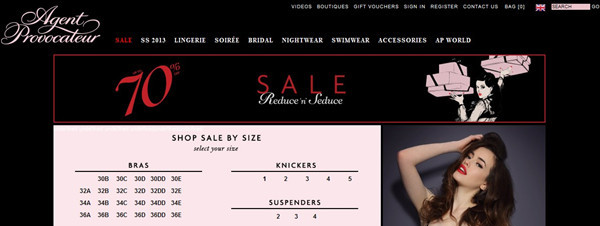Sales Culture
Black Friday has spread to the UK. Sounds like a plague, right? But what the “black” really stands for is that retailers who often work at a loss during the rest of the year, or are in the “red”, finally make a profit through often ridiculously marked down sales. On a positive note, we here in the UK are far too civilised to go in for the violence seen in the US. The internet has a lot to do with that as people find it easier to “click and collect” than make a mad run on a store.

I am an independent, small business, lingerie designer. So I have a unique perspective on this end of retail, but the principles I will lay out are the same everywhere.
Now the idea that on one day you could have massively marked down items across a whole store’s product line came from Black Friday. In the UK it has been more traditionally January Sales where the end of line items and dead stock would be marked down to as low as 50% over the course of two weeks. But Black Friday is about marking everything at ridiculous discounts to shift as much stock as possible to finally make a profit. These sales were mainly in large department stores where the stock is mass manufactured and in bulk. The difference between an item’s retail price can be well over 10 times its manufacturing cost. Ex: a shirt made for £1 can be sold for £10. So a major store can afford to mark down the price on Black Friday to less than 70% – £3.
Now who is going to pay £10 if you can wait for Black Friday and get it for £3 or less?
This is where it gets dangerous. Black Friday has taught customers not only just to be savvy, but to demand the sale’s price. Black Friday has also encouraged consumers NOT to spend money unless an item is on sale. There is always a better price if you demand it, or withhold your custom to force the retailer to not only have a sale but also dictate the percentage off.

The most common comment on social media postings, in dedicated lingerie forums, “I love it. I want it. I will buy it when it’s on sale.”
For smaller brands that elusive promise to buy prompts them to join the Black Friday phenomena. But for many waiting for that one magical day in the year to get “in the black” is financially unfeasible. We need to sell throughout the year in order to purchase materials and create new designs/seasons. Instead of one big event, there are many; the end of season sale, mid-season sale, flash sale, pop up shop – all to keep the door open and the wolf from the door (and any other euphemism for not going out of business.)

Instead of focusing on selling off deadstock at reduced prices, consumers are insisting that mainlines get the same discounts. The rate of discount then becomes paramount to profit. At 50% off I am no longer making profit. At 70% off I am no longer paying myself only covering the costs of materials. So how, as a luxury goods provider do I not lose money in a sale but still give consumers the 70% discount they demand? Raise the retail price.
La Perla TALISMAN Thong £202.00 £60.60 (VAT incl.) 25/11/17
Stupid right? In a consumer’s mind, a pair of panties on average cost should be no more than £10-£25 regular retail. So putting a retail price of £85 on a pair of knickers then take the 70% off in a sale = £25. The upper end of acceptable.
How Agent Provocateur set themselves up for failure and ruined it for the rest of us.
Why not have sales of only 10% or 40%? The magic numbers start at 50%. I have tried numerous sales at various percents off, but when AP adopted a 70% sales business model, it drove all custom their way. It also did something else; it showed consumers their true cost of THAT brand’s product. With the frequency of their sales, it shouted to the world, AP can survive on bare margins. But, AP failed, went into receivership and now has been bought by the same people who own Sports Direct. AP’s legacy to the industry is not hot lingerie, but a debilitating business model and a consumer who demands less than manufacturing cost.

In 2015/6 a few independents, independently, attempted to reject the brutal sales model. There were discussions in the differing lingerie and corsetry boards of possible solutions. Of note, Bluestocking Boutique announced in their blog post that they would have no more sales. I made my own declaration of permanently lowering my prices and would not have deep cutting sales in the future. Those efforts did not work as well as we had hoped1. Sales are still necessary.

One interesting outcome of AP’s demise is that this Black Friday, their sales discount was advertised as 30%. We are going to have to watch this but it could mean a swing back to more logical and sound business practices. In the case of sales, when sales close down brands, the consumer is not always right.
If you have an idea on how brands can offer discounts to their customers or incentive to purchase – please tells! As you can see we could use some fresh ideas!




